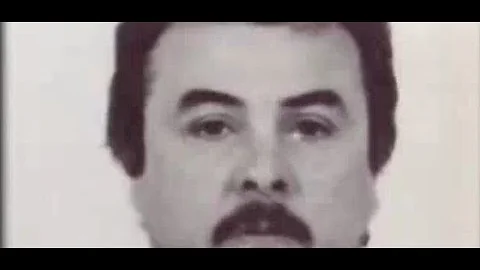Ross E Bland
age ~43
from Monroe, LA
Ross Bland Phones & Addresses
- 4200 Ava Ln, Monroe, LA 71201
- Laguna Vista, TX
- Dallas, TX
- Houston, TX
- Carthage, TX
- Cambridge, MA
- Greenville, TX
Work
-
Company:The Methodist Hospital
-
Address:6565 Fannin Street, Houston, TX 77030
Education
-
School / High School:University of Texas Southwestern Medical Center At Dallas2011
Languages
English
Specialities
Radiation Oncology
Us Patents
-
Systems And Methods For Interference Cancellation
view source -
US Patent:8078130, Dec 13, 2011
-
Filed:Dec 23, 2008
-
Appl. No.:12/317486
-
Inventors:Gerald L. Fudge - Rockwall TX, US
Ross E. Bland - Dallas TX, US
Antone L. Kusmanoff - Greenville TX, US -
Assignee:L-3 Communications Integrated Systems L.P. - Greenville TX
-
International Classification:H04B 1/10
-
US Classification:455295, 455296, 455307
-
Abstract:Systems and methods for interference cancellation in which a first signal having a first frequency may be cancelled with a second frequency having a second and different (e. g. , lower) frequency by employing sampling to cancel the first signal with the separate signal at the sample instances.
-
System And Method For Improved Spur Reduction In Direct Rf Receiver Architectures
view source -
US Patent:8509354, Aug 13, 2013
-
Filed:Dec 2, 2009
-
Appl. No.:12/592777
-
Inventors:Gerald L. Fudge - Rockwall TX, US
Ross E. Bland - Dallas TX, US
Sujit Ravindran - Dallas TX, US
Mark A. Chivers - McKinney TX, US -
Assignee:L—3 Communications Integrated Systems L.P. - Greenville TX
-
International Classification:H04L 27/00
-
US Classification:375324, 375130, 375147, 375316
-
Abstract:Improved spur reduction architectures that improve linearity in direct radio frequency (RF) receiver architectures. Non-uniform sampling in the form of sampling clock phase (or frequency) modulation is used to induce phase (or frequency) modulation on signals that are being received from a given Nyquist zone. At the output of the ADC (analog-to-digital converter), the signals are de-modulated to remove the induced modulation based on the Nyquist zone that is being received. The de-modulation process results in non-desired spurious artifacts (interfering leakage signals and ADC spurs) being spread in the frequency domain. Strong spurious artifacts may be removed after measuring the induced modulation and de-modulating. For the case of weak spurious artifacts, the de-modulation for the desired Nyquist zone spread these signals in the frequency domain. Induced modulation on signals may also provide a dithering effect on the ADC.
License Records
Ross E. Bland
Address:
411 Calypso St, Monroe, LA 71201
License #:
CDS.048345-MD - Active
Issued Date:
Jun 20, 2016
Expiration Date:
Jun 20, 2017
Type:
CDS License - Physician
Ross Hunter Bland
License #:
PTC.022833 - Expired
Issued Date:
Jun 9, 2015
Expiration Date:
Dec 9, 2016
Type:
Pharmacy Technician Candidate
Resumes

Ross Bland
view sourceLocation:
United States
Medicine Doctors

Dr. Ross E Bland, Houston TX - MD (Doctor of Medicine)
view sourceSpecialties:
Radiation Oncology
Address:
6565 Fannin St, Houston, TX 77030
7134411577 (Phone)
7134411577 (Phone)
Languages:
English
Hospitals:
6565 Fannin St, Houston, TX 77030
The Methodist Hospital
6565 Fannin Street, Houston, TX 77030
The Methodist Hospital
6565 Fannin Street, Houston, TX 77030
Education:
Medical School
University of Texas Southwestern Medical Center At Dallas
Graduated: 2011
University of Texas Southwestern Medical Center At Dallas
Graduated: 2011

Ross Edward Bland
view sourceSpecialties:
Radiation Oncology

Ross Edward Bland, Houston TX
view sourceSpecialties:
Oncologist
Address:
6565 Fannin St, Houston, TX 77030

Ross Bland
view source
Kelly Ross Bland
view source
Ross Bland
view source
Kim Machelle Ross Bland
view source
Ross Bland
view source
Ross Bland
view source
Ross Bland
view source
Ross Bland
view sourceYoutube
Myspace
Googleplus

Ross Bland

Ross Bland

Ross Bland
Classmates

Ross Bland
view sourceSchools:
Gonzalez Elementary School Brownsville TX 2000-2004
Community:
Roxanne Middleton, Valeria Sosa, Emily Fierros, Joseph Hasse, Melissa Eaves, Rebecca Ruiz, Claudia Leal, Jose Lara, David Castaneda, Cassandra Capistran

Roberta Jamison-Ross (Bla...
view source
Christine Ross (Bland) - ...
view source
Gonzalez Elementary Schoo...
view sourceGraduates:
Salvador Saenz (1997-2001),
Cassandra Capistran (1991-1995),
Catherine Moore (1995-1999),
Ross Bland (2000-2004),
David Castaneda (1999-2003)
Cassandra Capistran (1991-1995),
Catherine Moore (1995-1999),
Ross Bland (2000-2004),
David Castaneda (1999-2003)

Screven High School, Scre...
view sourceGraduates:
Ross Bland (1996-2000),
James Waters (1961-1965),
Elvin Anderson (1952-1956),
Haley Hill (1998-2002)
James Waters (1961-1965),
Elvin Anderson (1952-1956),
Haley Hill (1998-2002)
Get Report for Ross E Bland from Monroe, LA, age ~43





